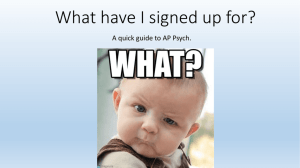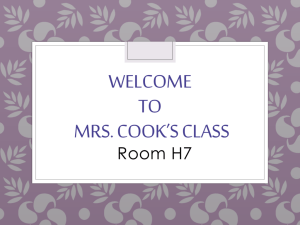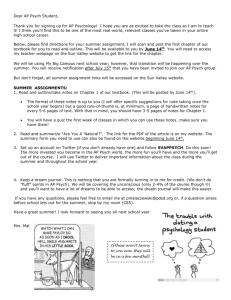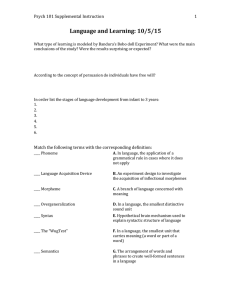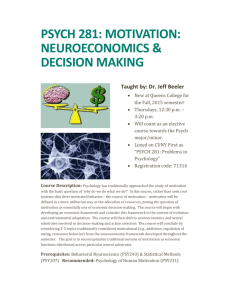15.676 Work, Employment, and Industrial Relations Theory
advertisement
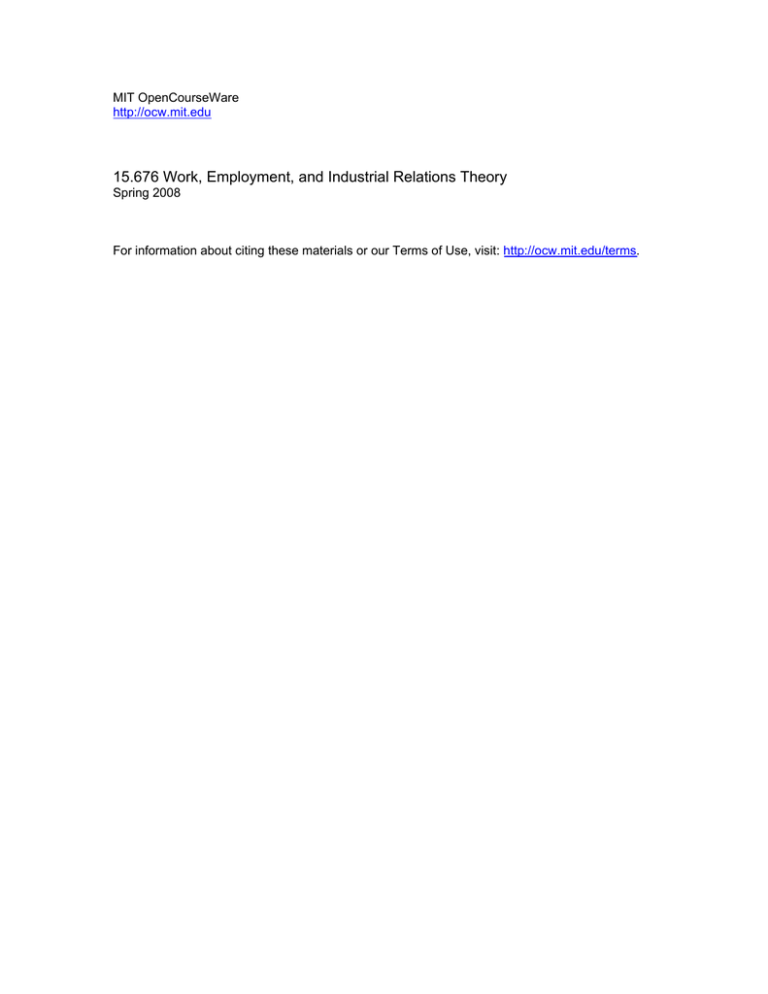
MIT OpenCourseWare http://ocw.mit.edu 15.676 Work, Employment, and Industrial Relations Theory Spring 2008 For information about citing these materials or our Terms of Use, visit: http://ocw.mit.edu/terms. From Personnel to HRM—evolution TK Notes Revised 4/2/08 A. Origins: Always two tracks—I/O Psych and a more macro PM/HRM/IR model 1. Industrial Engineering—to Sci Mgmt (1900-1920) 2. Welfare capitalism (1915-1930s) 3. I/O psych early basis a. Sci mgmt: i. productivity = f(optimal ind. Eng and incentives) ii. satisfaction = f( productivity and proper incentives) B. Human Relations a. Brining in the group b. Reversed the causal argument: i. productivity = f(satisfaction) ii. satisfaction = f(adequate attention to group processes) C. Modern I/O Psych born and takes off: 1950s-70s 1.Calling card was use of micro, individual data to apply psych theories—expectancy, path-goal, balance, etc and psychometric methods to the various functions of personnel, each treated separately: a. selection—validity, reliability, measurement—all big contributions here; especially as EEO requirements come along—big effects on practice and some on policy. We know a lot about how to validate selection systems b. performance appraisal—the worst stuff—measurement but not much progress beyond that c. compensation—here more multidisciplinary—economists and IR folks involved with the personnel psych types d. training—not really all that much good work—more left to economists and others 2. In 1960s the industrial psych gets criticized for being too micro, too individualistic, and missing organizational contexts and issues and so I/O psych starts to evolve: a. Job design literature—Hackman and Oldham; et al b. Turnover, absenteeism, individual performance, and satisfaction continue to be the dependent variables c. Models tend to be some mix of individual ability, motivation (effort), and some moderating organizational variables or contextual variables entered either as controls or as single theoretically interesting factors (such as reward systems). But still mostly micro, individual data. d. Dyer-Schwab, 1982 paper summarizes the state of research on I/O psych work in 1982 and hints at need for a new more macro model… D. 1970s and early 1980s—initial callings for a “Strategic HRM” approach a. Dyer’s 1982 HR Planning paper; Shuster and Jackson, our own work from more of an IR perspective (first major paper on this in 1984 in IR….) b. Leads to question of how to measure strategy, how to link it to practices, whether a contingency or universal model best fits the data…see Cappelli and Chadwick paper for today E. Early 1980s—the beginning of the bundles, complementarities, arguments and measurement of HR systems----performance linkages 1.We first saw the hr and ir practices---performance effects in the auto industry work in two papers coauthored with Harry Katz—1983 ILRR, 1985 AMJ. Eye openers for us and for others! 2. Then Joel actually did the first “bundles” paper at Xerox—ILRR, 1990—not as well cited but to my knowledge the first one to look at practices in combination and show performance effects. 3. Then---MacDuffie, Ichniowski, Shaw, and their progeny, mostly funded out of Sloan Foundation projects a. Industry Studies Program launched in 1989: b. HR Network launched in 1991 or so to build a network of HR/IR researchers studying the effects of HR/IR and work practices on performance—within specific industries 1. Methods emphasized field work—getting out their to learn the institutions 2. Working with labor and management practitioners 3. Doing rigorous research 4. Engaging young scholars—students—now faculty members 5. Building a network of researchers who shared ideas F. Summary—where are we in the I/O Psych world today 1. Still alive, and very active—JAP, Personnel Psych, other journals are the key outlets 2. Still active in shaping the P/HRM Division of the Academy—look at their topics, papers, and sessions 3. Still active as reviewers of HR work—and here is where the debate get joined: Can we bundle, should we bundle, how to bundle versus treat these as separate and distinct constructs—we need to engage this question, theoretically and methodologically. G. Parallel IR work over this time: 1. 1920s—debate with Sci Mgmt proponents over whether one best way would eliminate conflict in employment relations 2. 1930s and 40s—Kerr and others took on the human relations advocates for notion that social processes and group issues adequately addressed the economic and structural features of employment relations. Classic paper called “Plant Aborigines” 3. 1960s—80s: will the rise of Org Psych and behavior—job design eliminate need for unions? By and large in practice this did lead to successful union avoidance in large firms—tremendous impact on the field—only began to be realized by IR researchers in the 1980s (Foulkes, 1980 book, chapter 3 of KKM, 1988 paper showing empirically that these practices virtually guaranteed non-union status in new organizations (Kochan, McKersie, and Chalykoff, ILRR, 1988). 4. 1980s-2000-revisionary view of welfare capitalism—Jacoby—shows it was and is stronger and more resilient than traditional view that it died with the Depression 5. 1980s-present: leading the process of bundling to study HR/IR practices on performance and other outcomes 6. Arguing that the Strategic HR mantra has not really changed the power of HR in firms—they still are weak and this is a structural problem; HR has turned inward (I called it myopic) and there is a need for stronger, more independent worker voice in corporate governance—and so the debate goes on…. F. High Performance Literature—key questions: 1. What features should go in the “bundle” of practices? Why does each seem to differ? 2. So what’s the theoretical basis for expecting a relationship? a. Motivation-commitment I/O psych basis? b. IR—movement from job control to more flexible work systems? c. Knowledge-based work—unleashing full human capital potential? d. Complementarities—(Milgrom/Robert economic theory) or IR Systems/Internal Labor Market Theory—features fit together to form a system…? 3. Shouldn’t we broaden the range of outcomes examined to look at worker outcomes (wages, security, satisfaction, voice, etc. as well as performance? 4. How should we think about the high performance models and SHRM in a world where organizational boundaries are blurred; people work side by side under different employment contracts (different HR systems…)? 5. Public Policy issue: How do you get high performance practices to diffuse broadly—promoting the high productivity-high wage or “high road” to competitiveness and improved living standards???? Where should this research go next????
